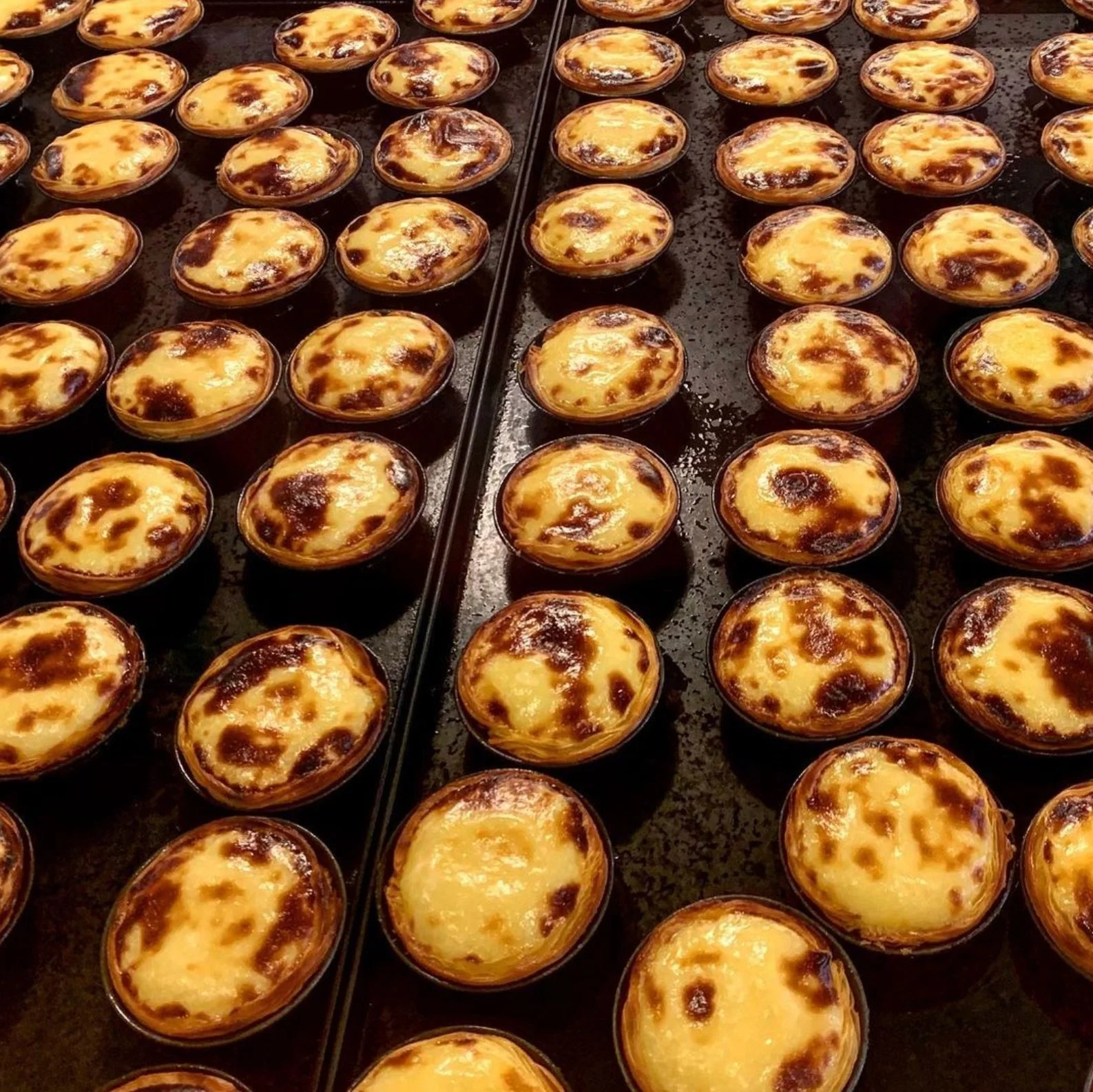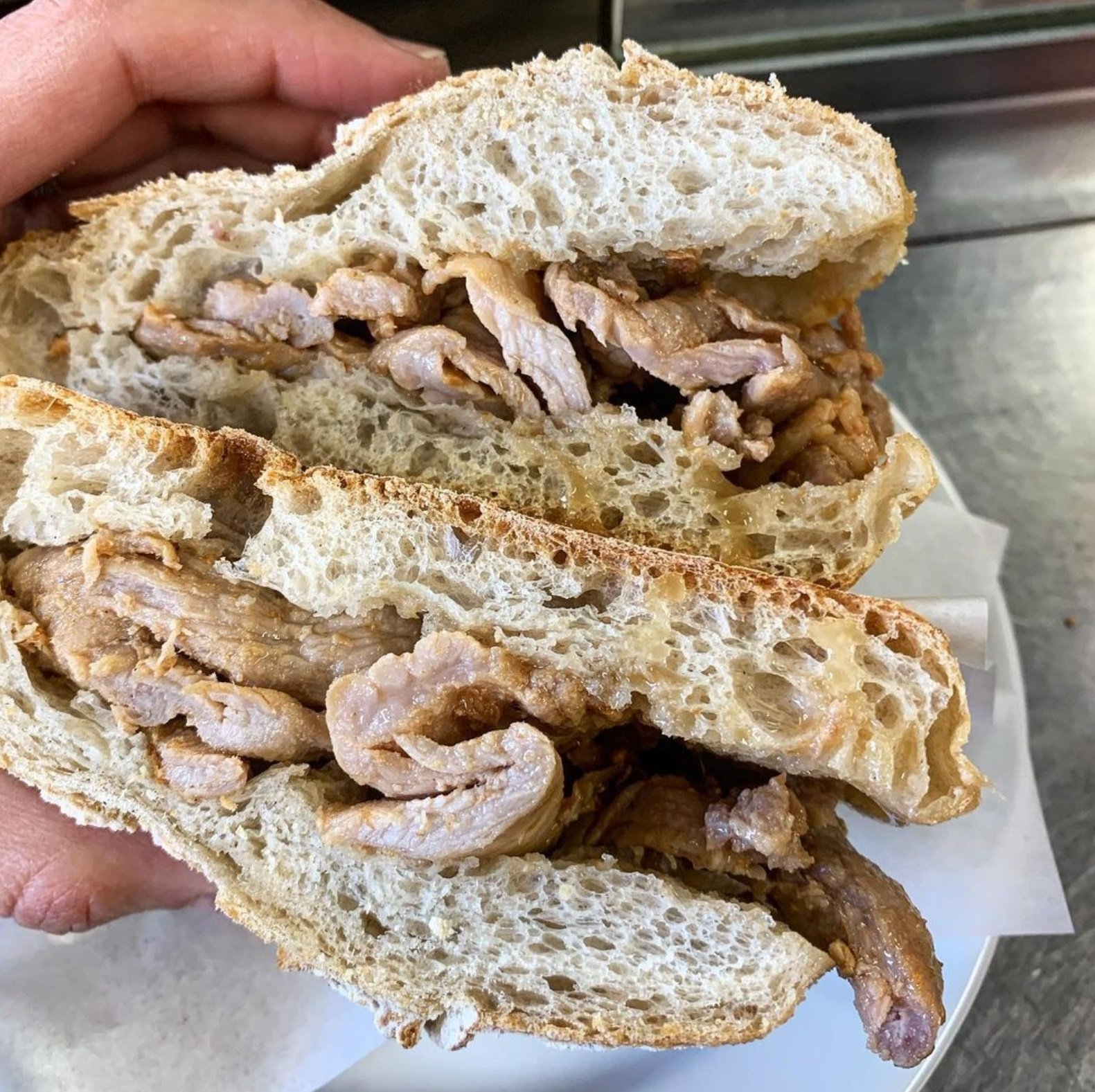If you consider yourself a “foodie,” you will most certainly enjoy Portugal’s thriving culinary scene. Combining influences from the Mediterranean, Spain, and even Northern Africa, Portugal offers a wide variety of delicacies.
Traditional Portuguese dishes include many hearty specialties, such as soups and stews. Meanwhile, Portuguese street food includes specialty pastries, fried foods, and more. One thing all of the food in Portugal has in common is a love for fresh, quality ingredients. If you want to get a taste of what Portugal has to offer, say no more, buckle up, and enjoy this culinary trip.
a guide to Portuguese Street Food & Cuisine:
History of Portuguese food
Although many people have the misconception that Portugal has been solely influenced by Spain, that is not the full story. Portugal has a strong Arab influence, starting with the arrival of the Moors in the 8th century. Their skills and craftsmanship made a lasting impact on culture, architecture, cuisine, agriculture, and even traces in the language. Fruit trees such as apricots, oranges, almonds, olives, and fig orchards were planted by the Moors in Portuguese lands, specifically in the Algarve region.
In the late 1300s, the Portuguese empire had the strongest maritime trade, thanks to their knowledge and experience in the sea. They were able to reach unknown lands, making them one of the early players in initial food globalization. They brought ingredients from Asia, Africa, and the New World, which helped spark a revolution in the European diet. They brought back “exotic” ingredients such as rice, potatoes, coffee, and tea. They also brought back spices like coriander, pepper, ginger, curry, and saffron.
Today, the Moorish and other influences from around the world are still seen in the local cuisine. Additionally, the Atlantic coast gives Portugal access to some of the best fish and seafood in the world. Portugal’s Marisqueiras (seafood restaurants) is a great place to enjoy the catch of the day with a crisp glass of Vinho Verde.
Popular Portuguese street food
You can find Portuguese street food in markets, street vendors stalls, and pastelarias (pastry shops). Some of the most iconic foods are found on the streets of Portugal for less than 10 euros. Some of the best include:
Pastéis de Nata by Sophie
Pastéis de nata
You can find locals and people from all over the world queuing for hours just to enjoy one of Portugal's most popular snacks and with good reason! The tarts are filled with a traditional Portuguese egg-based custard that makes your mouth water simply by looking at it. Fresh out of the oven with a cup of coffee is the best way to enjoy - just saying! Legend tells us that these were created in the 18th century by the monks of Belem who needed to find a use for all the extra egg yolks on hand since they used the egg whites to starch the nuns’ habits.
Today you can find these pastries all over Portugal, specifically in Lisbon. There are different variations that come in different flavors as well. They are the perfect snack to have while you tour Portugal!
Sardinhas assadas
Also known as grilled Portuguese sardines, Sardinhas assadas are a popular summertime dish in Portugal. They are particularly popular in Portugal because of the freshness of the sardines from the Atlantic Ocean. You can find them in restaurants, and also in cans, which make a great souvenir!
During the entire month of June, the atmosphere of Lisbon is packed with the aroma of grilled sardines. So much so that on the 12th and 13th of June the capital organizes the most popular sardine festival, which initiates the season of Festas de Sardinha.
Bifana by Sophie
Bifana
Sandwiches are common Portuguese street food, and also found in cafes in Portugal. The sandwich consists of marinated pork in a crunchy on-the-outside but soft-in-the-inside bread roll. What is unique about the bifana is the secret marinade recipe
Bifanas can be combined with a bowl of soup and fries to make a complete meal for lunch or dinner. For a traditional Portuguese late-night snack, pair it with a cold beer.
Rissóis
These are Portugal’s version of turnovers or croquettes. Portuguese rissoles are a breaded and fried pastry filled with either cheese, meat, or shrimp with a creamy béchamel sauce. These half-moon-shaped snacks are usually eaten cold, as an appetizer in cafes, or on the streets of Portugal.
Ingredients in Portuguese food
Presunto Ham Sandwich by Sophie
Presunto do Alentejo
The love for dry-cured ham is well known in Spain; however, Portugal’s Presunto do Alentejo is among the most exquisite hams in the world. Why is it so unique, you might ask? This is due to the aging of the whole pig’s leg that has been salted, washed, dried, and then aged. Once aged enough, the ham sliced very thin. The flavor should not be overpowered with salt, and it must have hints of caramel, butter, or even nuts.
Bacalhau & roasted potatoes by Sophie
Bacalhau
Bacalhau or Portuguese codfish, is a national obsession. There are more than 365 different bacalhau recipes, from grilled, baked, canned, and fried bacalhau to suit your tastes. Our must-try dishes include the pasteis de bacalhau (codfish fritters), bacalhau à brás (cod fish egg), Bacalhau a gomes de sa ( cod fish, potato and egg casserole topped with olives), pasteis de bacalhau, Bacalhau Suado à Lisboa, Bolinhos de bacalhau, or Pataniscas de Bacalhau, you must definitely try.
Sausage, Ham, Cheese and Bread Spread by Sophie
Sausages
A staple of Portuguese cuisine, so much so, it is hard to find a meat dish that does not include any type of sausage as an ingredient. And sausage is a must in Portuguese stuffing! Commonly found sausages include chouriço (chorizo), morcela (blood sausage), and farinheira (flour, pork fat, garlic, and white wine sausage). Alheira de mirandela is stuffed with a mix of meats and garlic. It plays an important role in history because it was what Portuguese Jews would cook in order to “prove” their conversion to Christianity. The sausages are commonly served as an appetizer, or an afternoon snack, but can be made a full meal with some french fries and a fried egg.
Must-Try Traditional Portuguese dishes
Of course, no trip to Portugal would be complete without traditional seafood dishes. The options are endless, but these are some of the most iconic ones:
White Fish à la Lagareiro
Portuguese Seafood Rice:
Very common along the coast of Portugal, this rice dish is made from various seafood ingredients like prawns, squid, mussels, clams, and complemented with peas and tomatoes. Unlike the Spanish paella, this rice dish is quite runny from additional sauce added, making it more like a thick stew.
Fish à la Lagareiro
Any fish or seafood can be prepared “lagareiro” style, which consists of dressing the seafood or fish generously with Portugues olive oil after grilling or roasting. Polvo à la Lagareiro is one of our personal favorites. The meat is typically baked or roasted and served with boiled potatoes. It is simple, yet exquisite!
Churrascaria is the term used to describe traditional eateries where meat is grilled or cooked in churrasco style. It can be literally translated from the word "barbecue." This cooking style was introduced and well adopted by the Portuguese colonies in Brazil. Brazilian churrascarias are rodizio style barbecue restaurants that offer grilled meats served tableside and cut from skewers with all-you-can-eat food options.
Chicken Piri Piri
Piri-Piri or "African devil" was one of the spice blends the Portuguese explorers brought from Africa in the 15th and 16th centuries. They began seasoning their chicken with this chili spice before grilling and has since become a national staple dish. The chicken is usually enjoyed with fresh fries and a fresh salad.
Francesinha with fries by Sophie
Francesinha
The staple one you must try, which is also quite extreme, is the Francesinha. Various meats, cheese, and a special beer-based sauce are used to make this traditional dish. If that wasn't enough, the hearty sandwich comes with a fried egg on top and a side of french fries.
Feijoada
The word “Feijoada” comes from “feijão,” or beans, meaning that the meal is practically a thick legume soup. What once was considered “poor people food,” feijoada was enjoyed by Portuguese families as their staple weeknight meal, and it gained popularity nationwide due to its comfort, simplicity, satisfaction, and nourishment. The meal consists of some sort of grain or legume, vegetables, and pork meat (if lucky).
Caldo Verde
Caldo Verde is Portugal's most iconic soup. Originating from northern Portugal, this dish is green in color, hence the name, because it is cooked with a dark green cabbage that's hard to find outside of Portugal. This hearty and unique soup is usually enjoyed with a creamy and flavorful potato puree, a slice of spicy sausage (chorizo), and local Portuguese olive oil.
Portugal’s food scene is the true representation of a country that has been acquiring some of the best influences in the world and turning it into its own. A country with such ancient history, rich culture, and inspiring literature will create an impact and inspire a flame in anybody open to discovering it.
































If you’re looking for the best Europe trip packing list, look no further! In this blog post, we’re sharing our comprehensive guide to packing for Europe so that you can embark on your journey fully prepared. We’re here to make sure your luggage remains light and your experiences unforgettable.